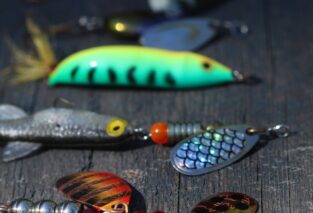If you’re a fishing enthusiast eager to embark on the exciting adventure of tuna fishing, “Can You Go Tuna Fishing: Tips and Techniques for Tuna Anglers” is the ultimate guide you’ve been searching for. Packed with essential tips, expert techniques, and valuable insights, this comprehensive resource will equip you with the knowledge and skills needed to tackle the challenging world of tuna fishing. Whether you’re a seasoned angler or a beginner, this guide will be your trusted companion, providing you with all the tools necessary to make your next tuna fishing expedition a successful and unforgettable experience.
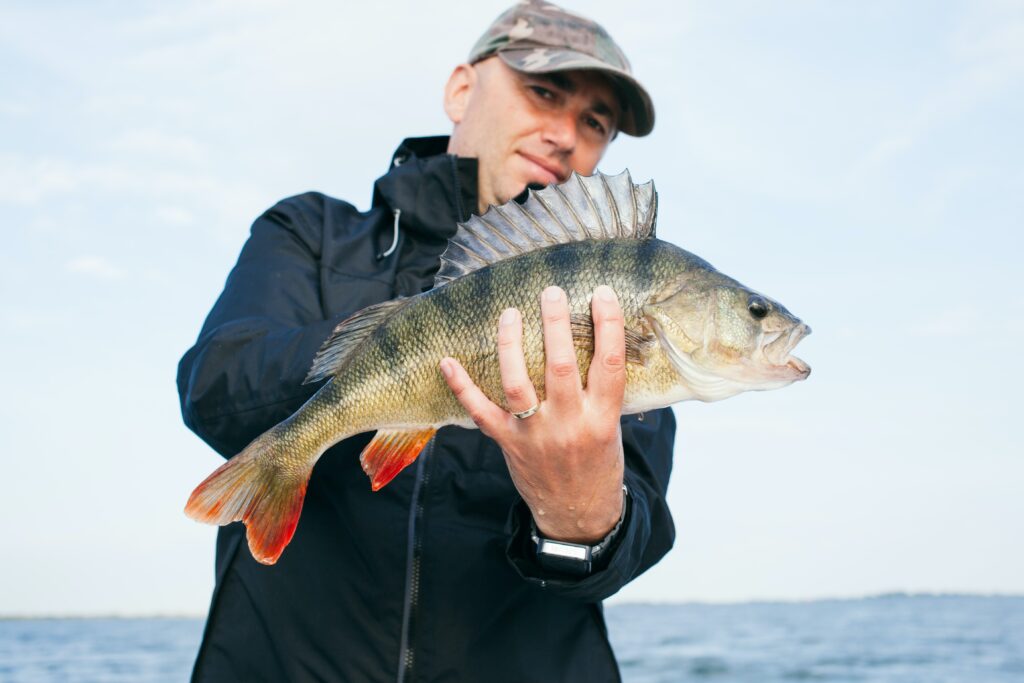
Understanding Tuna Fishing
Tuna fishing is a popular and exciting sport that allows you to test your skills and experience the thrill of hooking a powerful and fast-swimming fish. To be successful in tuna fishing, it is important to have a good understanding of the different aspects involved. This comprehensive guide will provide you with all the information you need to know to become a knowledgeable and successful tuna angler.
Tuna Fishing Overview
Tuna fishing involves targeting different species of tuna, such as bluefin, yellowfin, and albacore, among others. These fish are highly valued for their taste and also offer a challenging fight when hooked. Tuna can be found in both saltwater and freshwater environments, and their migratory patterns vary depending on the species. Understanding the different types of tuna and their behavior will greatly increase your chances of a successful fishing trip.
Types of Tuna
There are several different types of tuna that anglers commonly target. The three most popular tuna species are bluefin, yellowfin, and albacore. Bluefin tuna are known for their immense size and strength, making them a prized catch among anglers. Yellowfin tuna are also highly sought-after for their speed and agility in the water. Albacore tuna, on the other hand, are known for their excellent taste and are often targeted for their culinary value. Each species has unique characteristics that should be considered when planning your fishing trip.
Tuna Fishing Seasons
Tuna have specific seasons when they are more abundant in certain areas. It is important to understand the tuna fishing seasons in your region to maximize your chances of success. The timing of these seasons can vary depending on the species and location. For example, bluefin tuna are commonly found in the North Atlantic from May to November. Yellowfin tuna, on the other hand, can be found year-round in some regions. Researching and planning your fishing trip around these seasons will greatly increase your chances of catching tuna.
Equipment and Gear
Having the right equipment and gear is essential for a successful tuna fishing trip. The type of gear you will need depends on the fishing techniques you plan to use and the size of the tuna you are targeting. Strong and durable fishing rods and reels are a must, as tuna are powerful and can put up a strong fight. You will also need a variety of terminal tackle, such as hooks, swivels, and sinkers, to ensure your bait is presented properly. Choosing the right lures and bait is also crucial in enticing the tuna to bite. Investing in high-quality, reliable gear will make your fishing experience more enjoyable and increase your chances of success.
Preparing for Tuna Fishing
Before heading out on your tuna fishing adventure, proper preparation is key to ensure you have a successful and enjoyable trip. Here are some essential steps to consider when preparing for tuna fishing:
Research and Planning
Researching and planning your fishing trip is crucial in maximizing your chances of success. Start by gathering information about the specific tuna species you are targeting, their behavior, and their preferred habitats. Consult local fishing reports, online resources, and experienced anglers to get insights and tips. Additionally, consider the best locations and fishing grounds for the targeted tuna species during specific seasons. Taking the time to research and plan your trip will give you a solid foundation for a successful day on the water.
Understanding Tuna Behavior
To increase your chances of hooking a tuna, it is important to understand their behavior and feeding habits. Tuna are known for their highly migratory nature and can cover vast distances in search of food. They are opportunistic feeders and are often found near baitfish schools, underwater structures, and temperature breaks. Understanding these patterns and behaviors will help you choose the right location and fishing techniques to target tuna effectively.
Choosing the Right Location
Selecting the right location is crucial in tuna fishing. Different tuna species have specific habitats and preferences. Deep offshore waters, rocky structures, and areas with strong currents are often productive spots for tuna. Utilize charts, maps, and local knowledge to identify areas where tuna are likely to be found. Additionally, consider the presence of other factors such as baitfish, temperature breaks, and underwater structures that may attract tuna. By choosing the right location, you increase your chances of encountering these powerful fish.
Checking Weather and Conditions
Before heading out on your fishing trip, it is important to check the weather and sea conditions. Tuna fishing often takes place offshore, and weather conditions can change rapidly. Strong winds, rough seas, and inclement weather can make the fishing experience challenging and unsafe. Monitor weather forecasts, sea condition reports, and wind patterns to plan your trip accordingly. Safety should always be a top priority, so it is important to be aware of any potential risks and make informed decisions based on the weather conditions.
Securing the Necessary Licenses
Before going tuna fishing, make sure to obtain the necessary fishing licenses and permits. Different regions and jurisdictions have specific regulations regarding tuna fishing. These licenses not only ensure that you are fishing legally but also contribute to the conservation and management of tuna populations. Check with the local authorities or fishery departments to understand the licensing requirements and obtain the proper documentation.
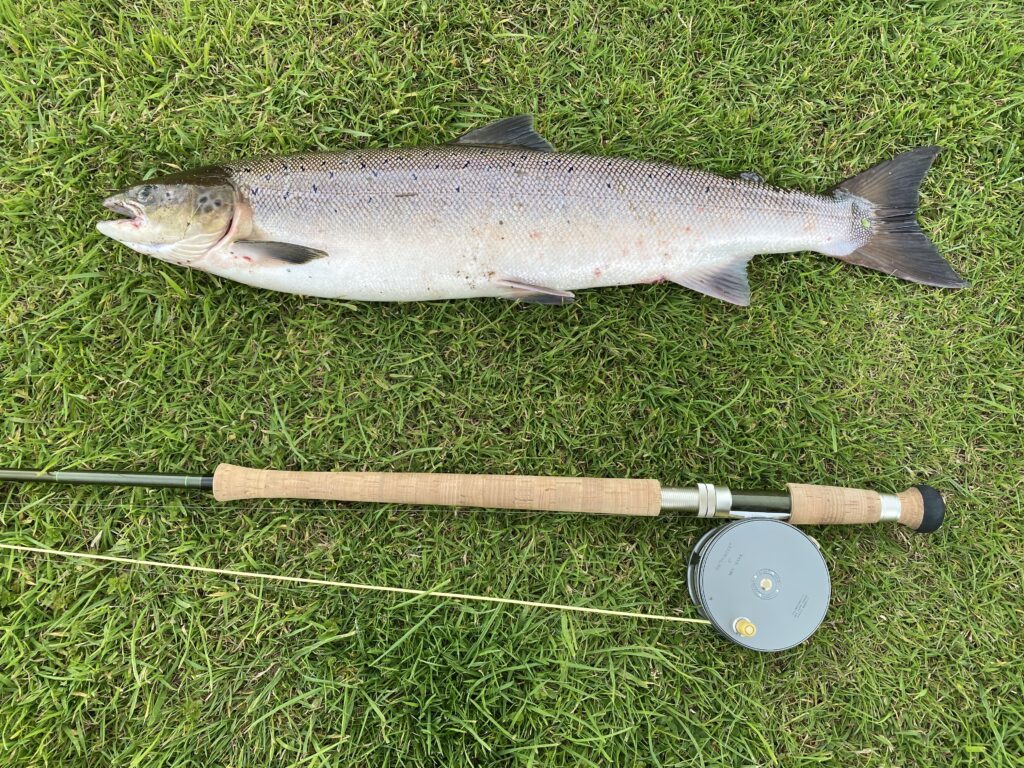
Selecting Fishing Techniques
The success of your tuna fishing trip greatly depends on selecting the right fishing techniques. Tuna can be caught using various methods, each suitable for different scenarios. Here are some popular tuna fishing techniques to consider:
Casting and Trolling
Casting and trolling are common techniques used to target tuna. Casting involves casting out a lure or bait and retrieving it in an enticing manner to attract the attention of the fish. Trolling, on the other hand, involves dragging bait or lures behind a moving boat. Both methods are effective for covering large areas of water and imitating the movement of baitfish. Depending on the location and conditions, choosing between casting and trolling can greatly increase your chances of attracting and hooking tuna.
Jigging and Popping
Jigging and popping are highly effective techniques for targeting tuna, especially when they are feeding near the surface. Jigging involves using specialized jigs that imitate injured or fleeing baitfish. By jerking the rod in an up-and-down motion, the jig mimics the movement of struggling prey, attracting tuna. Popping, on the other hand, involves using topwater lures that create a splashing and popping sound when retrieved. This technique imitates the commotion created by baitfish, enticing tuna to strike. Jigging and popping can be physically demanding but can result in exhilarating encounters with powerful tuna.
Drift Fishing
Drift fishing is a technique often used when targeting tuna in deep offshore waters. It involves drifting with the current while presenting baits or lures. The goal is to present the bait naturally and allow it to drift in the current, simulating the movement of baitfish. Drift fishing allows you to cover a larger area and can be effective for targeting tuna that are actively feeding or cruising in the water column. It is important to adjust your drift speed and bait presentation to match the conditions and behavior of the tuna.
Chunking
Chunking is a technique that involves using fresh chunks of baitfish as chum to attract tuna. These chunks of bait are typically scattered in the water to create a scent trail and entice tuna to investigate. When chunking, it is important to choose the right size of bait chunks and maintain a consistent chumming pattern. This technique can be very effective when tuna are feeding near the surface or when they are not actively taking lures. Chunking requires patience and skill but can reward you with exciting tuna encounters.
Live Baiting
Live baiting is a preferred technique for many tuna anglers as it imitates the natural movement and behavior of baitfish. This technique involves using live fish, such as sardines or mackerel, as bait. Live bait is often hooked through the lips or tail and allowed to swim freely in the water. The movement and distress signals emitted by the live bait attract predators, including tuna. Live baiting requires careful handling and management of the baitfish, but it is a highly effective method for targeting large, trophy-sized tuna.
Using the Right Tackle
Having the right tackle is essential for effectively targeting and landing tuna. Tuna are powerful and fast-swimming fish, so your gear needs to be strong and durable. Here are some key factors to consider when selecting the right tackle for tuna fishing:
Fishing Rods for Tuna
When choosing fishing rods for tuna, look for models specifically designed for offshore or big game fishing. These rods are typically long, strong, and can handle heavy loads. Fiberglass or graphite composite rods are popular options as they offer the ideal balance between strength and flexibility. Consider the length and power of the rod based on the size of tuna you are targeting. Longer rods provide increased casting distance, while shorter rods provide more accuracy and control.
Reels and Line
Selecting the right reel is crucial for handling the powerful runs and high-speed runs of tuna. Look for reels specifically designed for offshore or big game fishing. These reels should have a high line capacity, a smooth drag system, and a sturdy construction to withstand the demands of tuna fishing. When it comes to fishing line, braided lines are a popular choice due to their high strength, low stretch, and thin diameter. Opt for braided lines with a high poundage to ensure they can handle the brute force of a hooked tuna.
Terminal Tackle
Terminal tackle refers to the various components at the end of your fishing line, such as hooks, swivels, and sinkers. It is important to select high-quality and strong terminal tackle that can withstand the power and speed of tuna. Choose hooks that are sharp, corrosion-resistant, and appropriate for the size of bait you will be using. Swivels should be strong and reliable to prevent line twists. Sinkers or weights can be used to sink your bait or lure to the desired depth. Consider the size and shape of the sinkers based on the fishing conditions and desired presentation.
Selecting Hooks
Selecting the right hooks is crucial for successfully hooking and landing tuna. Tuna have hard mouths, so it is important to choose sharp and strong hooks that can penetrate their tough skin. Circle hooks are a popular choice as they are less likely to cause serious injury to the fish and have a higher hook-up rate. Choose hooks with a size and strength suitable for the size of tuna you are targeting. It is also a good idea to have a variety of hook sizes and styles to adapt to different fishing conditions and bait sizes.
Choosing Lures
Choosing the right lures for tuna fishing is essential in attracting their attention and triggering strikes. Lures that mimic the size, shape, and movement of baitfish are generally effective in enticing tuna. Topwater lures, such as poppers and stickbaits, can create commotion and mimic the action of distressed prey. Jigs and vertical jigs are effective for imitating injured or fleeing baitfish beneath the surface. Soft plastic lures, such as swimbaits and shad tails, can be effective when retrieved at varying speeds. Consider the color, size, and diving depth of the lures based on the water conditions and the behavior of the tuna.
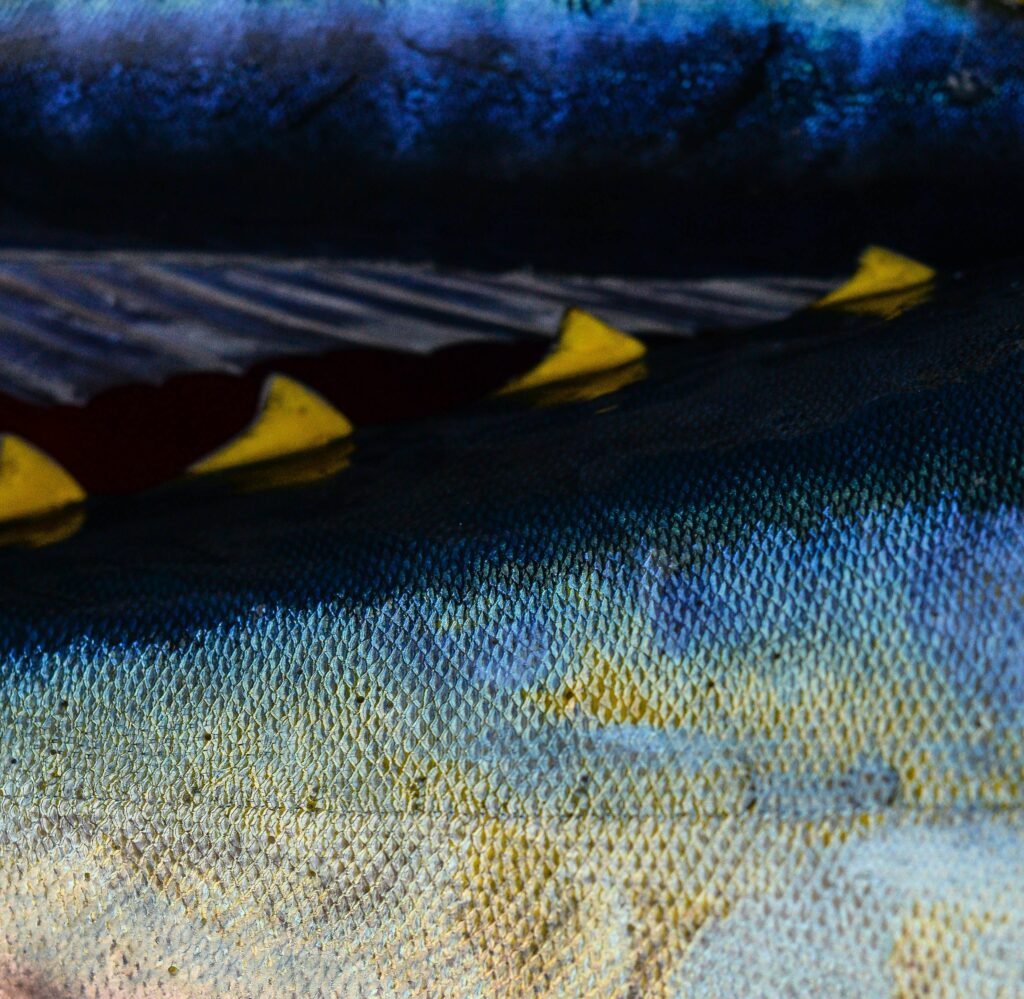
Mastering Tuna Fishing Skills
Mastering the different fishing skills associated with tuna fishing is essential for increasing your chances of success. Here are some key skills to focus on:
Casting Techniques
Mastering casting techniques is crucial for effectively presenting your bait or lure to tuna. Practice your casting accuracy and distance to ensure your bait lands in the desired area. Pay attention to your rod positioning, arm movements, and timing to achieve optimal casting form. Casting accuracy is especially important when targeting tuna that are feeding near structures or in specific areas.
Trolling Tips
Trolling requires finesse and an understanding of boat speed and lure action. Experiment with different trolling speeds, lure depths, and patterns to determine what works best in attracting tuna. Pay attention to the wake and action of the lures and make adjustments as needed. Trolling multiple lines at different distances and depths can increase your chances of hooking multiple tuna simultaneously.
Jigging and Popping Techniques
Jigging and popping require physical stamina and an understanding of the tuna’s behavior and feeding patterns. Practice the rhythmic motion of jigging and experiment with different speeds and depths to imitate the movement of baitfish. When popping, focus on creating a popping or splashing sound that imitates the commotion created by feeding fish. Pay attention to the timing and duration of the pops to maximize your chances of enticing a strike.
Drift Fishing Strategies
Drift fishing requires patience and an understanding of the current and movements of the bait. Experiment with different bait presentations and speeds to find the most effective drift fishing strategy. Pay attention to the behavior of the tuna and adjust your drift speed and bait position accordingly. Drift fishing can be highly productive when tuna are actively feeding or when the water conditions are conducive to this technique.
Chunking Techniques
Mastering chunking techniques involves understanding the proper use of chum, bait size, and scattering patterns. Experiment with different chumming intervals, chunk sizes, and presentation methods to entice tuna to bite. Maintain a consistent chumming pattern and ensure that the chunks of bait are scattered at varying distances and depths. Chunking requires patience and attention to detail but can yield great rewards when executed correctly.
Understanding Tuna Feeding Habits
Understanding the feeding habits of tuna is crucial for increasing your chances of success. Tuna are opportunistic feeders and are known to target a variety of prey. Here are some key aspects of tuna feeding habits to consider:
Locating Tuna Food Sources
Tuna are often found near areas with abundant food sources. Baitfish, such as anchovies, sardines, and mackerel, are common prey for tuna. Pay attention to areas where there are large concentrations of baitfish, such as around reefs, underwater structures, and areas with strong currents. Look for signs of bird activity, such as diving or circling birds, as they can indicate the presence of feeding tuna.
Identifying Feeding Patterns
Tuna feeding patterns can vary depending on the species, location, and environmental conditions. They can exhibit surface feeding behavior, such as busting or boiling on the surface, or they may be found feeding at specific depths. Tuna also frequently engage in frenzied feeding, where they aggressively feed on baitfish in large groups. Observing these feeding patterns can give you valuable insights into the tuna’s behavior and help you choose the most effective fishing techniques and lures.
Understanding Tuna Prey
Tuna prey on a variety of baitfish, squid, and other small marine organisms. Understanding the preferred prey of the tuna species you are targeting can significantly improve your chances of a successful fishing trip. Research the local baitfish species and their behavior to select lures and bait that closely resemble their characteristics. Matching the size, color, and movement of the prey can make your presentation more enticing to the tuna.
Matching Lure Selection to Prey
Matching your lure selection to the prey that tuna are feeding on can greatly increase your chances of success. Pay attention to the size, color, and movement of the baitfish that are present in the area. Choose lures that closely resemble the characteristics of the prey to increase their effectiveness. Additionally, consider using lures that incorporate rattles or have additional attractants to further entice the tuna.
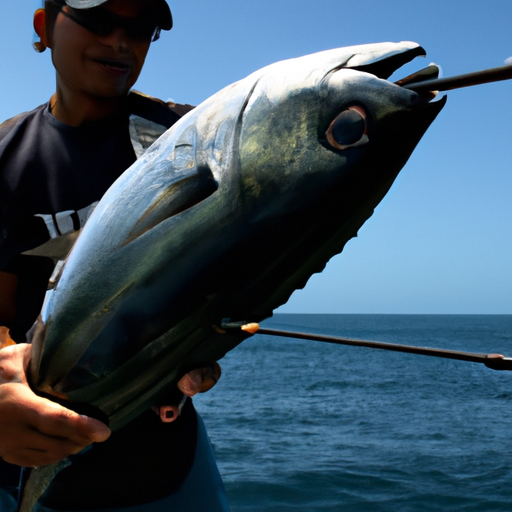
Tips for Increasing Catch Success
While tuna fishing can be challenging, there are several tips and techniques that can increase your chances of catching these elusive fish. Here are some valuable tips to consider:
Using Fish Finders and GPS
Fish finders and GPS devices can greatly enhance your fishing experience by helping you locate productive fishing grounds and underwater structures. These devices can provide valuable information about water depth, temperature, and the presence of baitfish. Utilize the features and capabilities of these devices to increase your chances of finding and catching tuna.
Maintaining Stealth and Noise Control
Tuna can be easily spooked by loud noises and excessive boat activity. Maintain a low profile and minimize noise on your boat to avoid alerting the fish to your presence. Turn off unnecessary electronics, close hatches and doors quietly, and avoid sudden movements that could startle the tuna. Adopting a stealthy and quiet approach will greatly increase your chances of getting close to feeding or cruising tuna.
Utilizing Chum and Attractants
Using chum and attractants can significantly increase your success rate when targeting tuna. Chumming involves creating a scent trail in the water by dispersing small pieces of baitfish or fish oil. This attracts tuna to your location and keeps them in the area. Consider using specialized chumming devices or homemade chum bags to disperse the bait slowly and effectively. You can also use attractants, such as fish oils or scent sprays, to enhance the appeal of your bait or lures and increase the chances of a strike.
Optimizing Bait Presentation
The presentation of your bait or lure is crucial in enticing tuna to bite. Pay attention to the speed, depth, and action of your bait or lure to mimic the natural movement of prey. Vary your retrieval speed, twitch your rod, or incorporate pauses to make the presentation more appealing. Experiment with different techniques and adjust your presentation based on the behavior and response of the tuna.
Adapting to Changing Conditions
Tuna fishing is dynamic, and conditions can change rapidly. Adaptability is key to increasing your catch success. Be prepared to switch fishing techniques, change locations, or modify your tackle based on the conditions and the response of the fish. Pay attention to the behavior of the tuna and make adjustments accordingly. Being flexible and adaptable will greatly increase your chances of success on the water.
Safety Precautions for Tuna Fishing
Tuna fishing can be an exhilarating and rewarding experience, but it is important to prioritize safety. Here are some safety precautions to consider:
Boat and Equipment Safety
Before heading out on your fishing trip, ensure that your boat and equipment are in good working condition. Regularly inspect and maintain your boat’s engine, electrical systems, and safety equipment. Check that life jackets, fire extinguishers, flares, and other safety equipment are readily accessible and in proper working order. Familiarize yourself with the boat’s operation and emergency procedures to ensure a safe and enjoyable fishing trip.
Emergency Preparedness
Being prepared for emergencies is crucial when tuna fishing. Carry a well-stocked first aid kit and know how to administer basic first aid. Have a comprehensive understanding of the boat’s safety equipment and emergency procedures. It is also advisable to have alternative means of communication, such as a VHF radio or satellite phone, in case of emergencies or unexpected situations. Educate yourself and your crew on proper emergency response and procedures to handle potential hazards effectively.
Proper Handling of Tuna
Handling tuna properly is important not only for your safety but also for the fish’s well-being and survival. Tuna have sharp fins, strong jaws, and powerful tails, so it is crucial to exercise caution when handling them. Use heavy-duty gloves or a towel to grip the fish, and avoid placing your hands near their mouth or gills. If you plan to release the fish, keep the time out of the water to a minimum and handle the tuna gently to minimize stress and potential harm.
Protecting the Environment
As responsible anglers, it is our duty to protect the environment and the fish we target. Follow catch-and-release protocols when appropriate, especially for large or endangered tuna species. Use non-lead sinkers and artificial lures whenever possible to minimize the negative impact on the marine ecosystem. Dispose of trash properly and avoid leaving any waste or debris behind. Respect fishing regulations, size limits, and bag limits to ensure the sustainability of tuna populations for future generations.
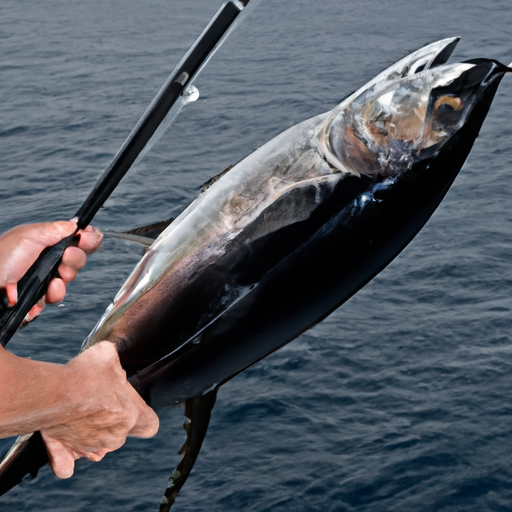
Post-Fishing Activities
After a successful day of tuna fishing, there are several post-fishing activities to consider. Here are some important steps to take:
Cleaning and Filleting Tuna
Properly cleaning and filleting your catch is essential for preserving its taste and quality. Start by bleeding the tuna immediately after catching it to ensure the flesh remains fresh and high in quality. Once back on land, use a sharp fillet knife to carefully remove the skin and bones. Take care to remove any bloodlines or dark meat to enhance the flavor of the fillets. Rinse the fillets thoroughly and store them properly for transportation or further processing.
Proper Storage and Transportation
Storing and transporting your tuna correctly is important to maintain its freshness and quality. Use coolers or ice chests lined with ice packs or crushed ice to keep the fish cold. Ensure that the fish is well-protected from direct contact with ice to prevent freezer burn. If transporting for long distances, consider vacuum-sealing the fillets to preserve their quality. Label the packages with the date and any other relevant details to ensure proper identification.
Sharing the Experience
Tuna fishing is an exciting and rewarding experience that is best shared with others. Take the time to share your fishing stories, photos, and experiences with fellow anglers, friends, and family. Consider joining fishing forums, social media groups, or fishing clubs to connect with other tuna anglers and exchange knowledge and tips. Sharing your experiences not only promotes camaraderie but also contributes to the overall enjoyment of the sport.
Reflecting on the Trip
Take some time to reflect on your tuna fishing trip and evaluate what went well and what could be improved. Consider the techniques, lures, and strategies that were successful and those that were not. Reflecting on your trip can provide valuable insights and help you refine your skills for future fishing adventures. Take note of memorable moments, lessons learned, and areas for improvement to ensure continuous growth and success as a tuna angler.
Conclusion
Tuna fishing is a captivating and challenging sport that offers thrilling encounters with powerful and fast-swimming fish. Understanding the various aspects of tuna fishing, from equipment and techniques to feeding habits and safety precautions, is crucial for a successful and enjoyable experience. By following the tips and techniques outlined in this comprehensive guide, you will be well-equipped to embark on your tuna fishing adventure and increase your chances of a memorable catch. So grab your gear, make your preparations, and get ready for an exhilarating day on the water in pursuit of these magnificent fish. Enjoy the thrill, savor the experience, and create lasting memories as you become a skilled tuna angler.





